There are over 500 spider species that call New Jersey their home. On this page, you can find pictures and information about the most common spiders in New Jersey. We will answer the question if there are any deadly spiders in NJ, how to identify dangerous spiders and how to identify other common NJ spiders like harmless orb weavers, jumping spiders, cobweb spiders and more.
Table of Contents
Poisonous spiders in NJ
If you are trying to identify a spider you found in NJ, your first question is probably if it can hurt you. And while almost all spiders in the world are venomous (not poisonous), only very few are considered medically significant. In New Jersey, there is only one group of medically significant spiders: black widows.
Black widows in NJ
There are two species of black widows in New Jersey: the northern black widow (Latrodectus variolus) and the southern black widow (Latrodectus mactans). Both species look very similar. Let’s have a look at the primary identification marks – you can find some pictures below:
- Black widows are primarily black. If the spider appears brown or purple, you are most likely looking at a false black widow (Steatoda grossa).
- They have a large round and shiny abdomen.
- Black widows have a red hourglass shape on the underside of their abdomen.
- They may have some red or white markings on their back.
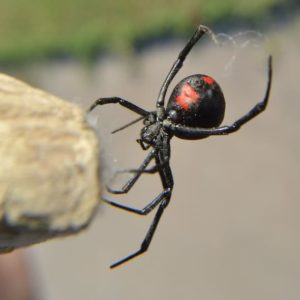
Latrodectus Mactans – Southern Black Widow
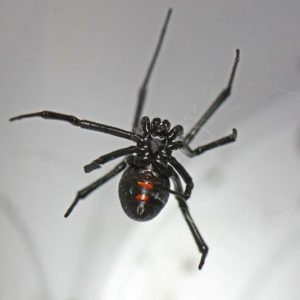
Latrodectus Variolus – Northern Black Widow
If you are bitten by a black widow, you should get medical attention immediately. Symptoms include local pain, nausea and other flu-like symptoms. Put ice on the bite area but don’t put on a tourniquet. Black widow spider bites are usually uncomfortable but are usually not deadly. Keep in mind that around 10 times as many people die from bee or wasp stings in the U.S. each year than from spider bites. Still, medical attention is advised.
Are there brown recluse spiders in New Jersey?
You should never say never but generally, there are no brown recluse spiders in New Jersey. Brown recluse spiders prefer warm and dry habitats and are mostly found in the Southern United States. Their natural range goes as far northeast as Southwestern West Virginia. A long way from New Jersey.
Even though everyone in New Jersey knows someone who knows someone who has seen or has been bitten by a brown recluse, most of these sightings are other brown spiders. Harmless and completely different-looking wolf spiders, fishing spiders and other house spiders are often confused with brown recluses. Simply because they are brown. Well have a look at them further down on this page.
Here is a picture and more information about brown recluses. However, if your spider doesn’t have a dark brown fiddle on its back, you are definitely not looking at a brown recluse.
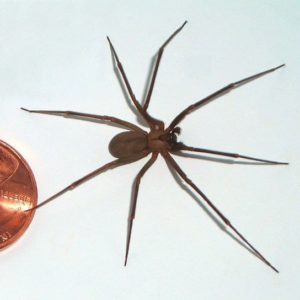
Loxosceles reclusa – Brown Recluse
Other common spiders in New Jersey
Almost all the common spiders found in New Jersey are harmless. Some large brown spiders are often mistaken for brown recluses who are not native to New Jersey. The largest families of spiders are orb weaver spiders, jumping spiders and cobweb spiders. Let’s have a look at some pictures.
Large brown spiders
The largest spider in New Jersey is the wolf spider. This large brown spider can reach a total leg span of up to 4 in (10 cm). Fishing spiders can also grow over 3 in (8 cm) and are often found near or even walking on water. Here are some pictures of common large brown spiders in NJ:
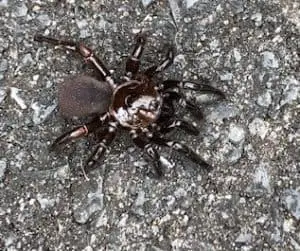
Ummidia – Trap-Door Spider
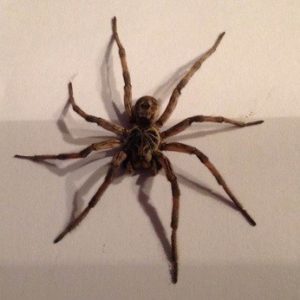
Lycosidae – Wolf Spider
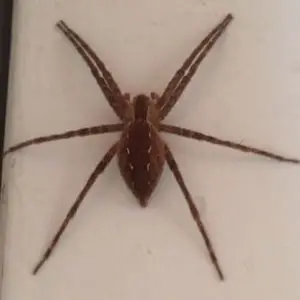
Pisaurina Mira – American Nursery Web Spider
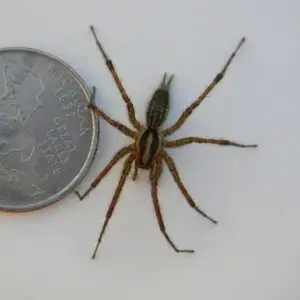
Agelenopsis – American Grass Spider

Dolomedes – Fishing Spider
Orb weavers in New Jersey
Orb weavers are spiders that build large round webs in our gardens, in the forest or on the front porch. With their webs, they catch flying insects and pets like mosquitoes. A great service for you. Orb weavers come in a variety of shapes, sizes and colors. Here are pictures of the most common NJ orb weavers:
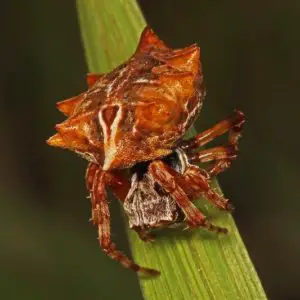
Acanthepeira Stellata – Starbellied Orb Weaver
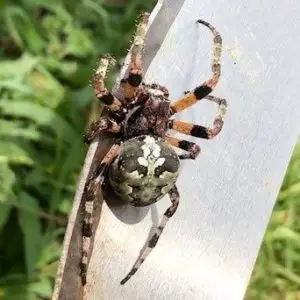
Araneus Bicentenarius – Giant Lichen Orb Weaver
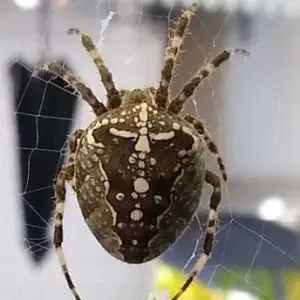
Araneus diadematus – The European Garden Spider
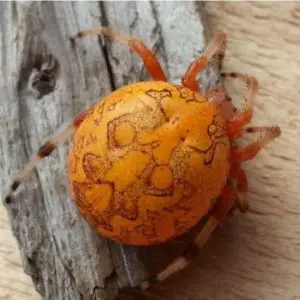
Araneus Marmoreus – Marbled Orb Weaver
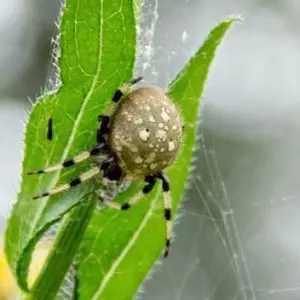
Araneus Trifolium – Shamrock Spider
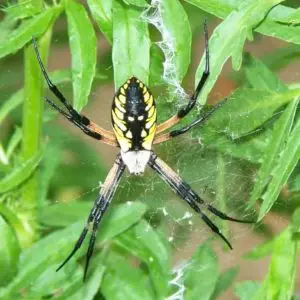
Argiope Aurantia – Black and Yellow Garden Spider
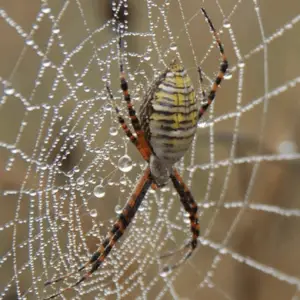
Argiope Trifasciata – Banded Garden Spider
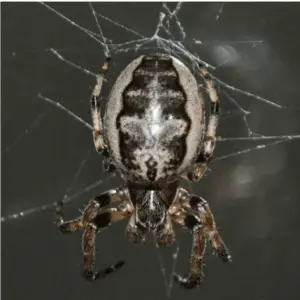
Larinioides Cornutus – Furrow Spider
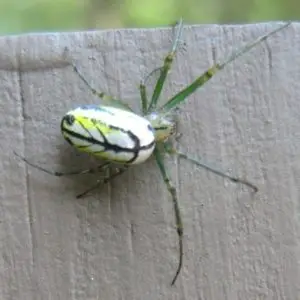
Leucauge venusta – Orchard Spider
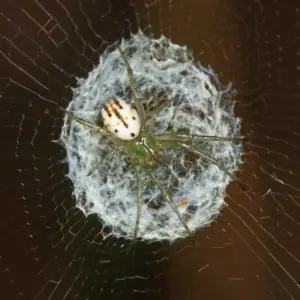
Mangora gibberosa – Lined Orbweaver
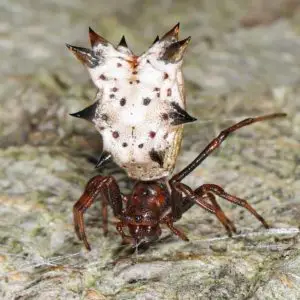
Micrathena gracilis – Spined Micrathena
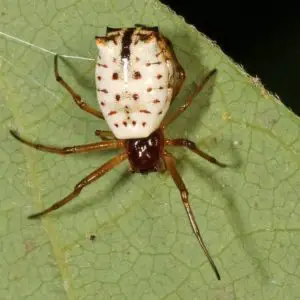
Micrathena mitrata – White Micrathena
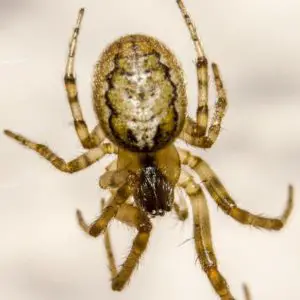
Missing Sector Orb Weaver – Zygiella X-Notata
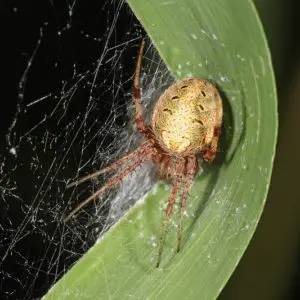
Neoscona Arabesca – Arabesque Orb Weaver
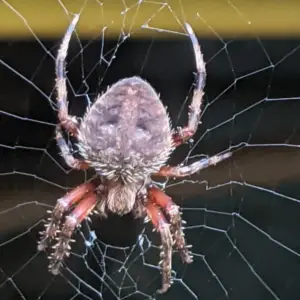
Neoscona crucifera – Spotted Orb Weaver
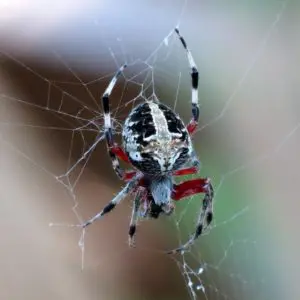
Neoscona domiciliorum – Red-femured Spotted Orbweaver
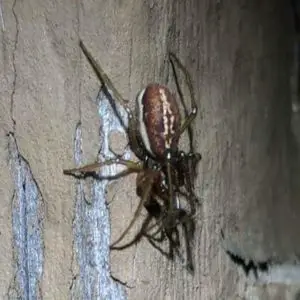
Pachygnatha
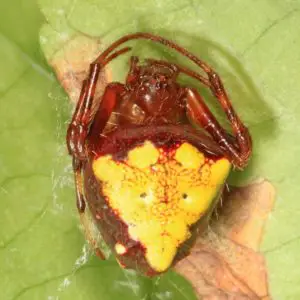
Verrucosa Arenata – Arrowhead Spider
Other common New Jersey spiders
Jumping spiders, crab spiders, cobweb spiders are often found indoors and are a common sight in NJ during the warmer months. Here is an overview of all other common NJ spiders. Just click on the images or the “read more” buttons to read more about each species.
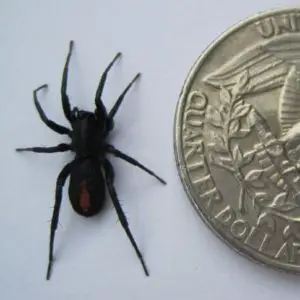
Castianeira Descripta – Red-Spotted Ant Mimic Spider
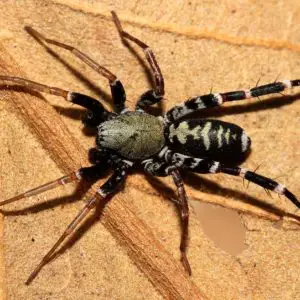
Castianeira Longipalpa – Long-Palped Ant Mimic Sac Spider
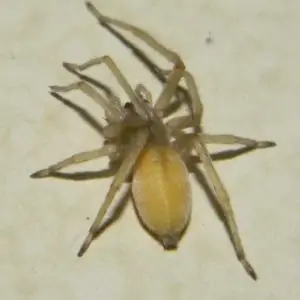
Cheiracanthium Mildei – Northern Yellow Sac Spider
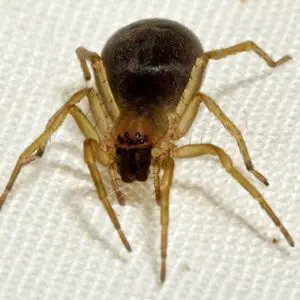
Clubiona – Leaf-Curling Sac Spider
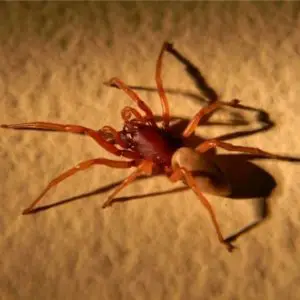
Dysdera Crocata – Woodlouse Spider
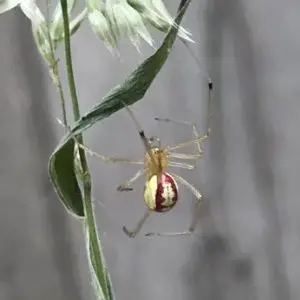
Enoplognatha Ovata – Candy-Striped Spider
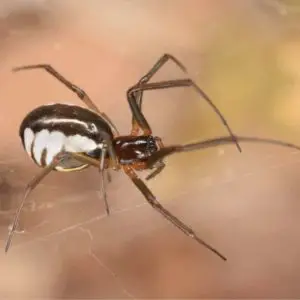
Frontinella Pyramitela – Bowl and Doily Spider
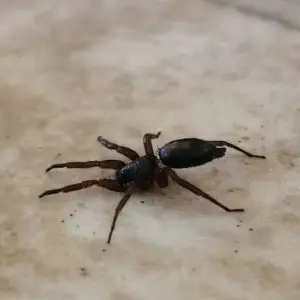
Herpyllus Ecclesiasticus – Eastern Parson Spider
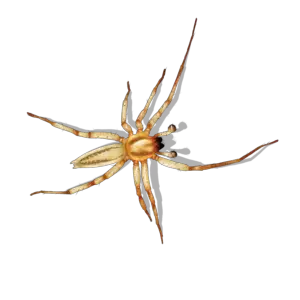
Hibana – Ghost Spider
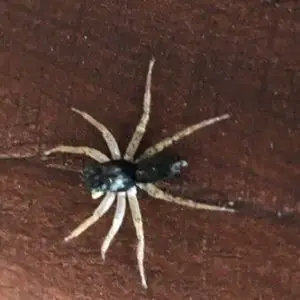
Maevia Inclemens – Dimorphic Jumper
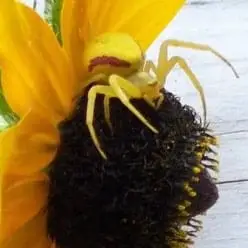
Misumena – Flower Crab Spider
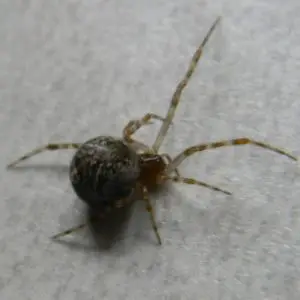
Parasteatoda tepidariorum – The Common House Spider
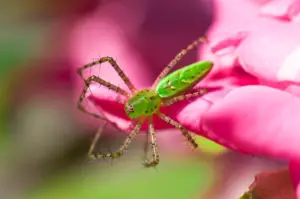
Peucetia viridans – Green Lynx Spider
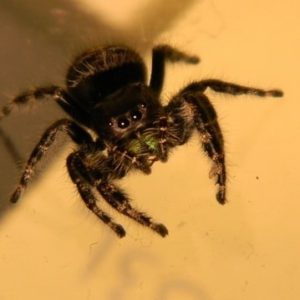
Phidippus audax – Daring Jumping Spider
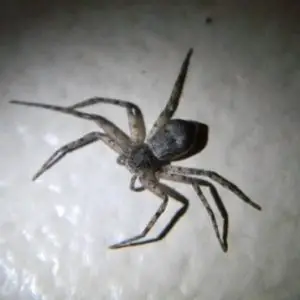
Philodromus – Running Crab Spider
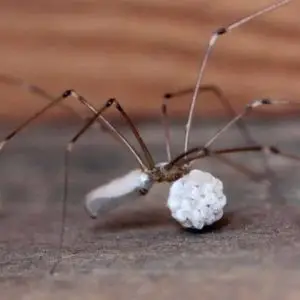
Pholcidae – Daddy Long-Legs or Cellar Spider
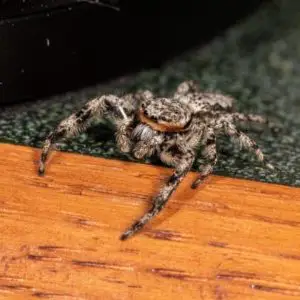
Platycryptus Undatus – Tan Jumping Spider
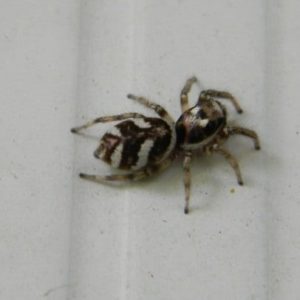
Salticus Scenicus – Zebra Spider
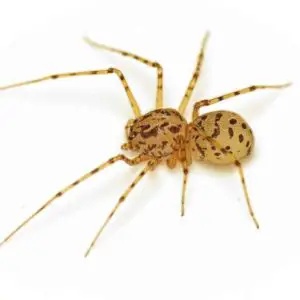
Scytodes Thoracica – Spitting Spider
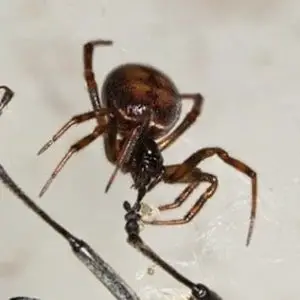
Steatoda Bipunctata – Rabbit Hutch Spider
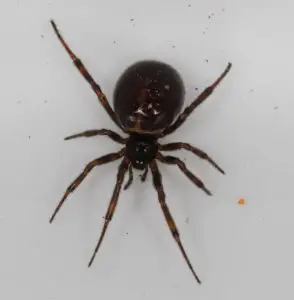
Steatoda borealis
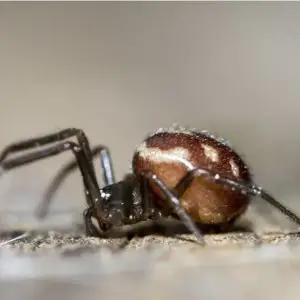
Steatoda Grossa – False Black Widow Spider
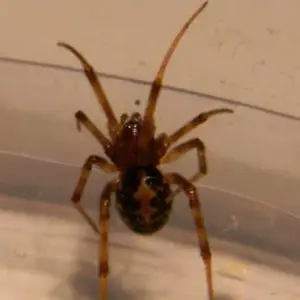
Steatoda Triangulosa – Triangulate Cobweb Spider
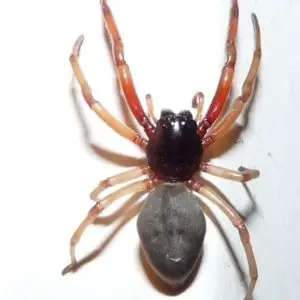
Trachelas Tranquillus – Broad-Faced Sac Spider
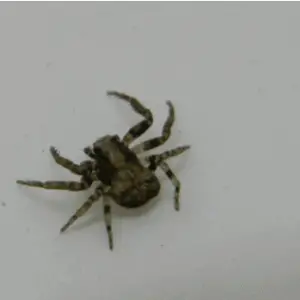
Xysticus – Ground Crab Spider
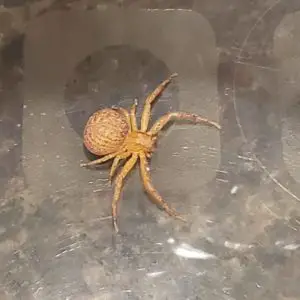
Xysticus Funestus – Deadly Ground Crab Spider
NJ spider identification
If you have found a spider in New Jersey that is not on our list, we can hopefully help you. Just head over to our spider identification page. There you will find a handy tool that might help you identify the spider. If not, simply upload a picture on that site and we will do our best to identify the spider for you. Head over to the spider identification page now.
